Beekeeping is a rewarding hobby and harvesting honey from your own bees is incredibly satisfying. So, if you’re new to keeping bees, you might wonder: how many times a year can you harvest honey? And is it profitable to have your own honey source?
Honey can be harvested around two to three times a season depending on climate and nectar flow, and from mid-summer to the beginning of fall. You should not harvest honey during the first year of the beehive because the colony is still growing and working on its honey production.
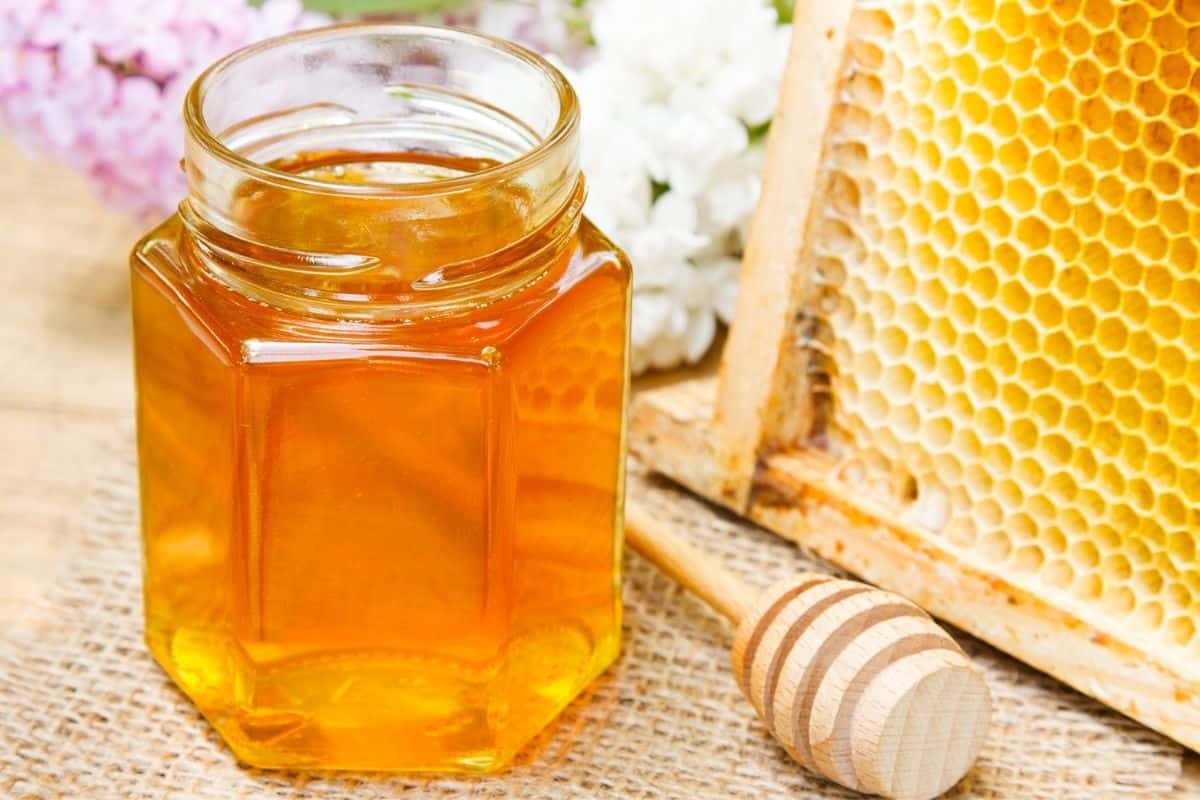
Tending to bees is such a captivating activity and not to mention the benefits you will have from having your own little honey factory. Here are a couple of things to keep in mind before you get too excited about all the honey you’re going to get from your honeybees.
How Often Can You Harvest Honey?
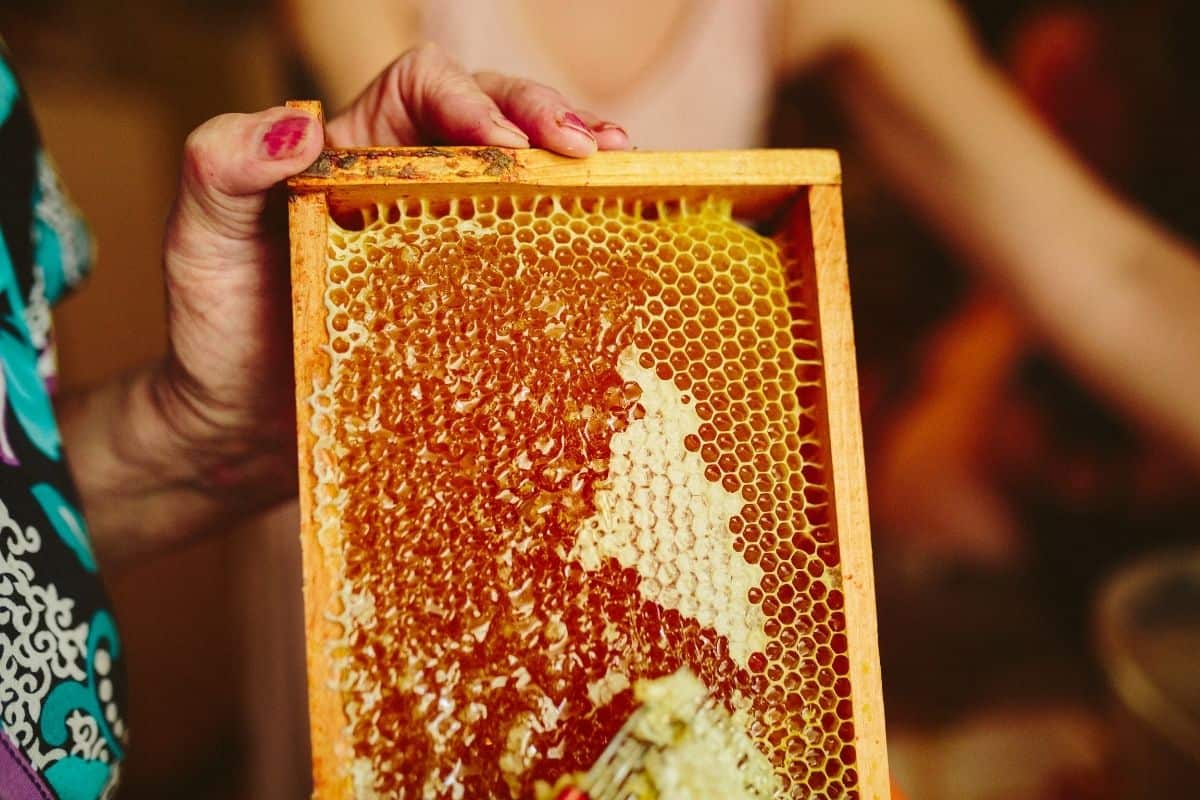
Honeybees work very hard to create the delectable treat we call honey. Typically, one bee only makes between one and twelve teaspoons of honey in its lifetime and has to visit millions of flowers to do it.
When you start your beehive, you need to give your bees at least one season to adapt and to start building their honeycombs. After the first season, you should be able to harvest between one to three times during a honey flow season.
That is if the local climate in your region is warm and favorable, there are no pests to steel the honey or infest the hive, or there is no disease pandemic in the colony.
A season typically lasts during the warmest months of the year, between summer and the beginning of fall (June to September). In regions globally where warmer temperatures exist right through the year, the honey flow tends to last a little longer.
When Should You Harvest the Honey?
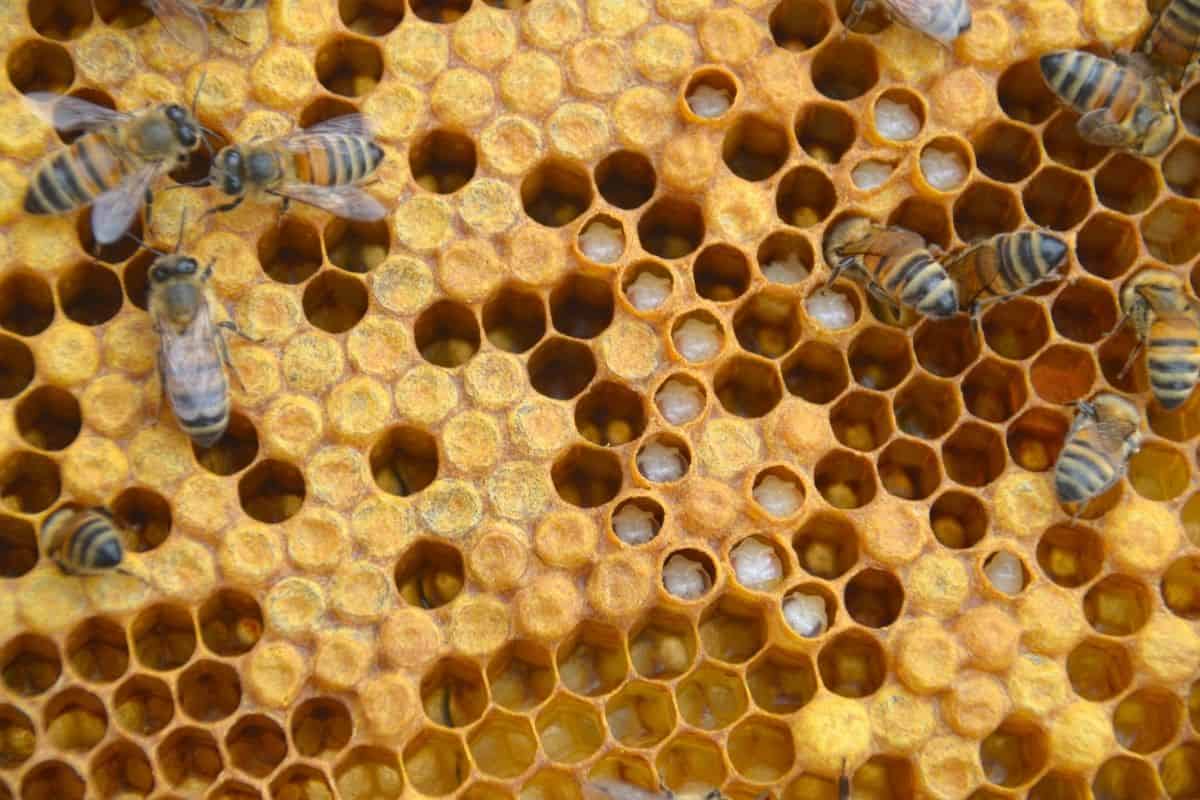
Bees collect flower nectar which they store inside the honeycomb. They fan the liquid with their wings so that the moisture evaporates and only an eighteen percent moisture level remains.
When the liquid is cured, the bees seal it off with a wax cap. As a rule, you shouldn’t extract a super which is less than eighty percent filled and capped. If the honey isn’t ready, it stands a more significant chance of becoming fermented and spoiled. If you don’t know whether the honey is ready for collecting, you can turn the frame on its side and give it a little giggle. If the fluid drips out, it means it’s not ready yet.
As for what time of day you should retrieve your honeycomb frames from the hive, it’s advisable to visit your super during mid-day when the climate is at its warmest, and most bees are out collecting nectar from surrounding flowers. This will provide minimal disturbance to these delicate creatures.
What Happens To The Honey If You Don’t Harvest It?
One of the magical things about honey is that it cannot go bad. If honey is not harvested from the hive, it will be hoarded by the bees and stored for the chilly months when they do not produce honey. The honey will most like thicken and granulate, making it impossible to extract, but the bees themselves will assuredly consume it.
Bees use plenty of energy keeping the hive warm in the winter by forming thermoregulating clusters. They beat their wings at immense speed to generate heat and keep the heat from escaping by using their bodies as insulators.
In the middle of the cluster, you will find the queen and the young bees in the colony who aren’t old enough to be worker bees or drones yet. The inner-circle benefits from the heat the worker bees generate.
Honey is one of the primary food sources for bees because it provides the energy they require during the cold months. A good beekeeper will leave about forty percent of the honey for his bees to last them through the winter.
How Much Honey Can You Harvest From One Hive?
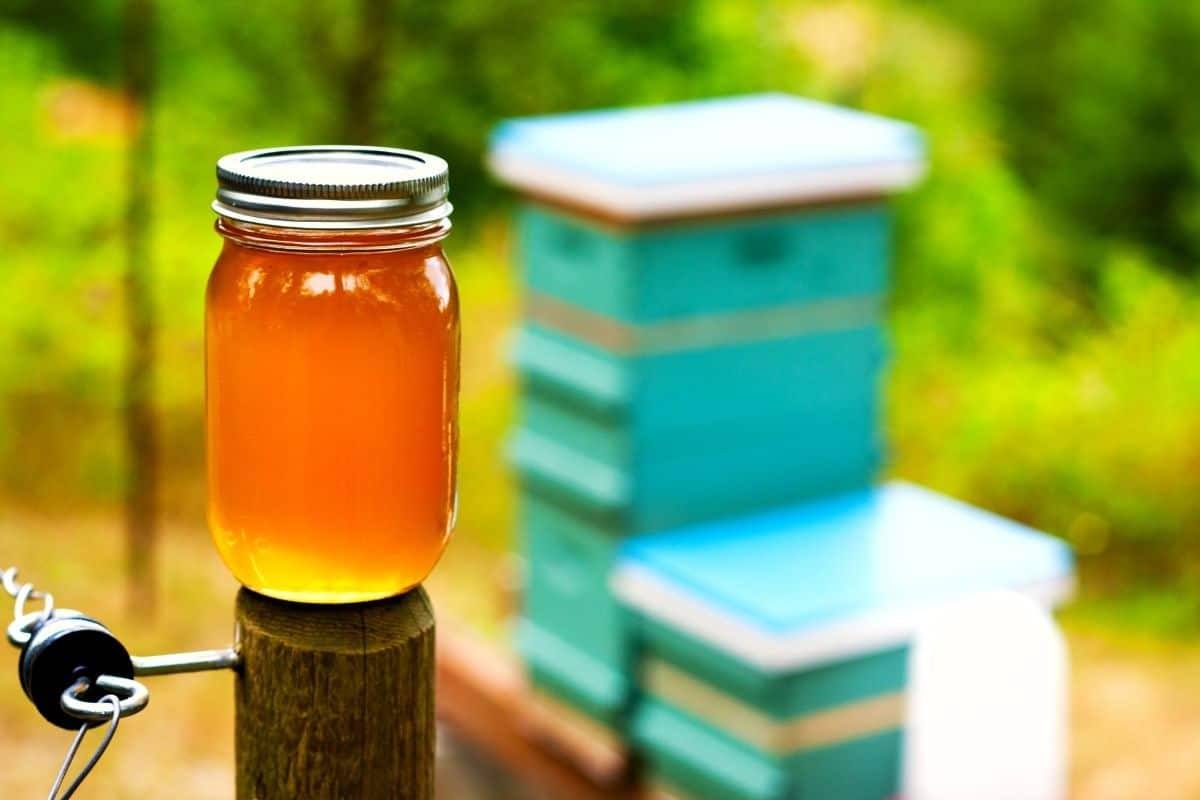
Depending on the size of your beehive, the climate, how many flowers are available to forage, and how strong your colony is, an average-sized box with seven to ten supers will generally yield about 60 to 80 lbs. of honey. That still leaves the bees with enough food sources to last them through the cold months.
The golden liquid can easily be extracted and poured into jars with the correct honey extracting equipment. Whether you sell the honey or keep it for personal use, you can keep it indefinitely because it doesn’t spoil. The low moisture content and high acidity are uninhabitable for bacteria and organisms to survive.
Not only can you collect honey from your beehive, but you also remove the honeycomb, which is used in candles or cosmetics like lip balm.
The question of whether it’s wrong to extract honey from an apiary has been raised in many debates. Still, unless you remove all the honey from the hive and allow the bees to starve, there is no moral ambiguity in extracting products from your bee colony.
Honey is a product used for human nourishment which no man or woman can replicate. Beekeeping is an agricultural practice that serves as a food source for humans, and honeybees are perfectly capable of dealing with and adapting to the loss of their honey. They always continue to make more, and as long as you leave enough honey for them to last through winter, they remain content.
3 Reasons Why Honey Has A Bad Smell
Honey has a distinctly sweet aroma that has no equal. Still, if you’re detecting a sour, acidic, or alcoholic twinge to your honey, it’s a good idea to investigate before redistributing it. Here are three conditions that can occur with your honey batch.
1. Fermentation
If the honey was not properly cured and was extracted too soon, it could have led to the product being fermented.
Fermentation can also develop if moisture seeped into the hive. Suppose the moisture level of the honey is not yet at eighteen percent. In that case, the temperature in a hive, the humidity, and the natural enzymes excreted by the worker bees, can cause the fermentation process to start.
The liquid begins to bubble because carbon dioxide is produced, and the honey will foam slightly at the top. This anomaly could make the honey taste sour, somewhat alcoholic, and very unpleasant. It will emanate a smell similar to yeast or even vinegar.
2. Disease
Another reason why your honey will have a foul odor is that it might have a bee disease. Of all the many ranging illnesses, the most dangerous one is American Foulbrood, which has a most disagreeable odor, as indicated by its name.
Beekeepers describe it as smelling like dead rotten animal remains and can be identified by darker brood cells in your hive and perforated, sunken cell caps.
There are numerous other diseases like varroa mites, nosemosis, and chalkbrood, but AFB is the most fatal. The only way to eradicate this disease when it’s present in your beehive is to destroy the entire colony. The destruction of your hive can be avoided by regular inspection, especially during spring and fall. If there are suspected cases, the infected frames should be removed and destroyed by burning them.
3. Plant selection
A much less severe reason for your honey having a horrid aroma could be accredited to the selection of plants that surround them. There might be intense variations of flowers and plants in the hive’s proximity which provide strong-smelling nectar the bees use to make their honey.
Certain flowers like daisies, dandelions, and goldenrods have a strong enough influence to affect the smell of your honey and make it reek of ammonia. However, the taste isn’t affected and remains quite delightful.
Many beekeepers prefer to leave the honey made from these flowers in the hive for bee consumption. And since these flowers are popular during the fall months, the honey produced can remain in the supers to help the colony survive the winter.
How To Get The Most Honey Out Of Your Hive
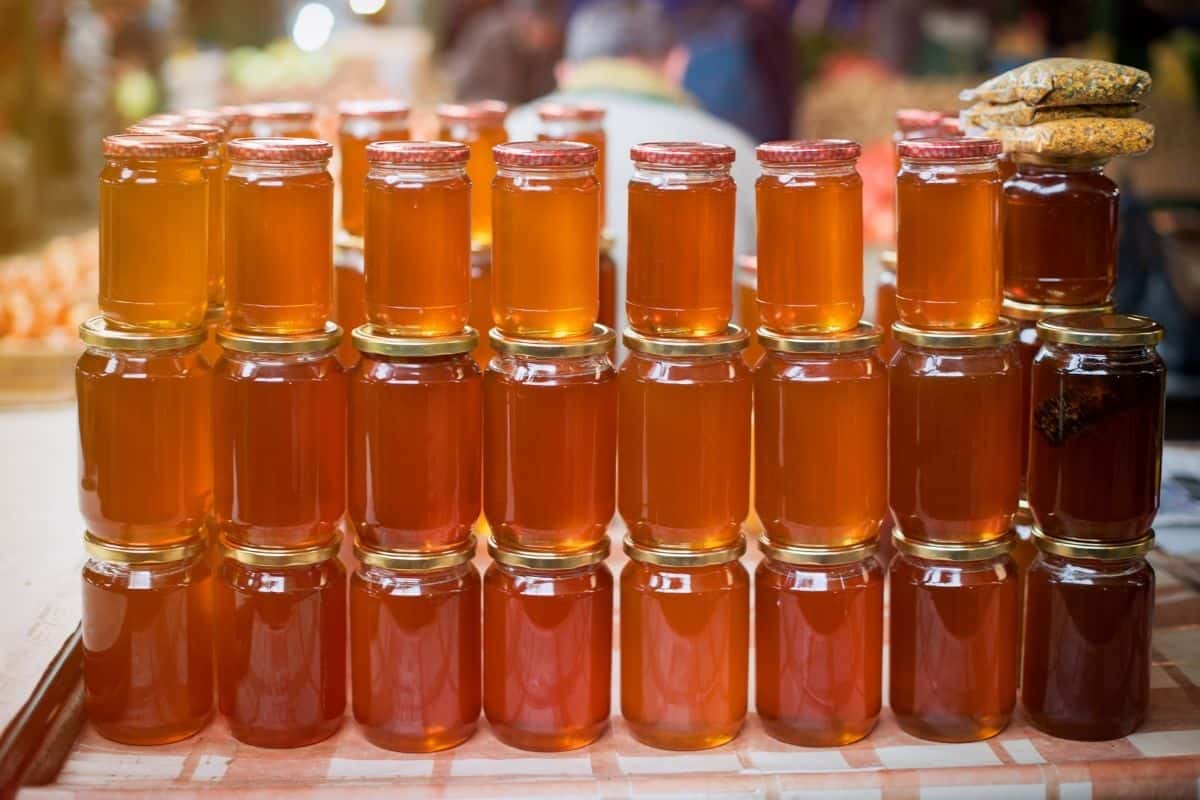
Bees will always work hard at making their honey, but that doesn’t mean that you can’t assist them a bit. The biggest extrinsic influences in the honey-making process are the weather and where you place your beehive.
There isn’t much we can do about the weather, but the location of your beehive can be a massive influence in having happy working bees.
- Pay attention to the location and endurance of the sun on your property during the day. If you live in colder regions more north, it will be acceptable to place your apiary in full sun the entire season. However, if you reside in warmer areas, you should set your beehive in an area with only morning sun; otherwise, it becomes too hot for them.
- Face the hive entrance to the south or southeast to avoid the strong, chilly wind. Have a fence, a bush, a tree, or some shrubs next to the northern wall of the hive to protect it from strong winds, especially in regions where it can become quite cold.
- If you have more than one beehive, ensure that there is enough space between the hives so they can operate independently.
- Elevate your beehives on cinder blocks or stands to prevent the ground moisture from seeping into the hives.
- Ensure that your hives are close to a water source.
- Face the apiaries away from an overpopulated footpath. Regular traffic will make the bees think that the hive is under threat.
- Consider the environment and what potential predators might disturb your beehives. It might be beneficial to erect a fence in areas where you are prone to wandering skunks and bears as visitors?
What Are The Benefits Of Raw Honey?
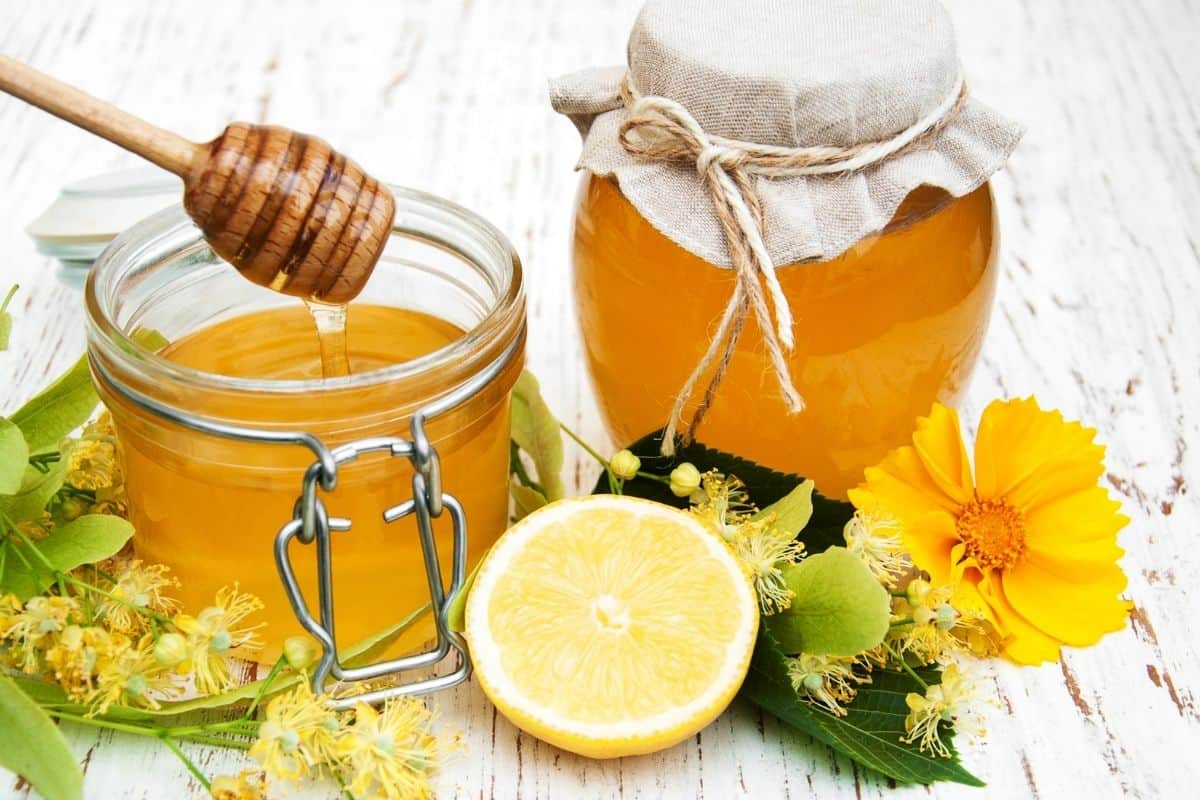
Raw honey is a natural substance that any scientist cannot replicate, regardless of how clever they are. This golden liquid is filled with plenty of health benefits like bee pollen, propolis, and loads of antioxidants.
Honey you find in stores goes through a process of pasteurization which diminishes some of the nutrients of the honey. Raw honey is still passed through several filters to remove impurities and foreign elements, but it’s generally believed that raw honey has more health benefits than regular honey.
- Honey has natural antioxidants like phytochemicals, flavonoids, and ascorbic acid. Antioxidants mop up free radicals in the body and help to relieve stress. It also helps to reduce the chance of chronic health conditions like cancer and other diseases. This is one element that scientists believe is diminished through the process of pasteurization.
- The nutritional value of honey can have a significant effect on a healthy diet. One tablespoon of raw honey (21 grams) contains about 16 g of sugar (around 64 calories). It includes components vital to a healthy diet like antioxidants, amino acids, and vitamins and minerals such as calcium, magnesium, phosphorous, potassium, and zinc. Honey is even a healthier option than sugar for people with diabetes and might even improve cholesterol levels.
- Due to honey’s antibacterial and antimicrobial qualities, it can kill harmful bacteria and fungi and doesn’t allow yeast or bacteria to grow. Certain types of raw honey (like manuka honey made by bees that pollinate the tea tree bush in Australia and New Zealand) have even been known to kill bacteria that cause food poisoning, skin infections, and stomach ulcers.
- Honey is also helpful to cleanse wounds thanks to its antibacterial, anti-inflammatory, and antioxidant properties. Because honey is so acidic, it releases oxygen from the wound and promotes healing. It can be applied directly to minor cuts and burns and wrapped with bandages.
- Many people have been using honey as a helpful alternative to prescribed cough medicine. Any person can use this as a safe way to decrease the severity of a troublesome cough and soothe their throat. However, avoid giving honey to infants under the age of one. At that age, they cannot yet fight the spores present in honey and can contract botulism, making them seriously ill.
- Honey might also have a soothing effect on acute diarrhea. This sweet liquid naturally doctors your digestive canal and aids with the recovery of your symptoms.
- Lastly, honey might even be able to help with memory. Its antioxidant and anti-inflammatory aspects benefit the brain and help fight inflammation in the hippocampus, which is responsible for memory.
What To Do When Your Honey Turns To Sugar?
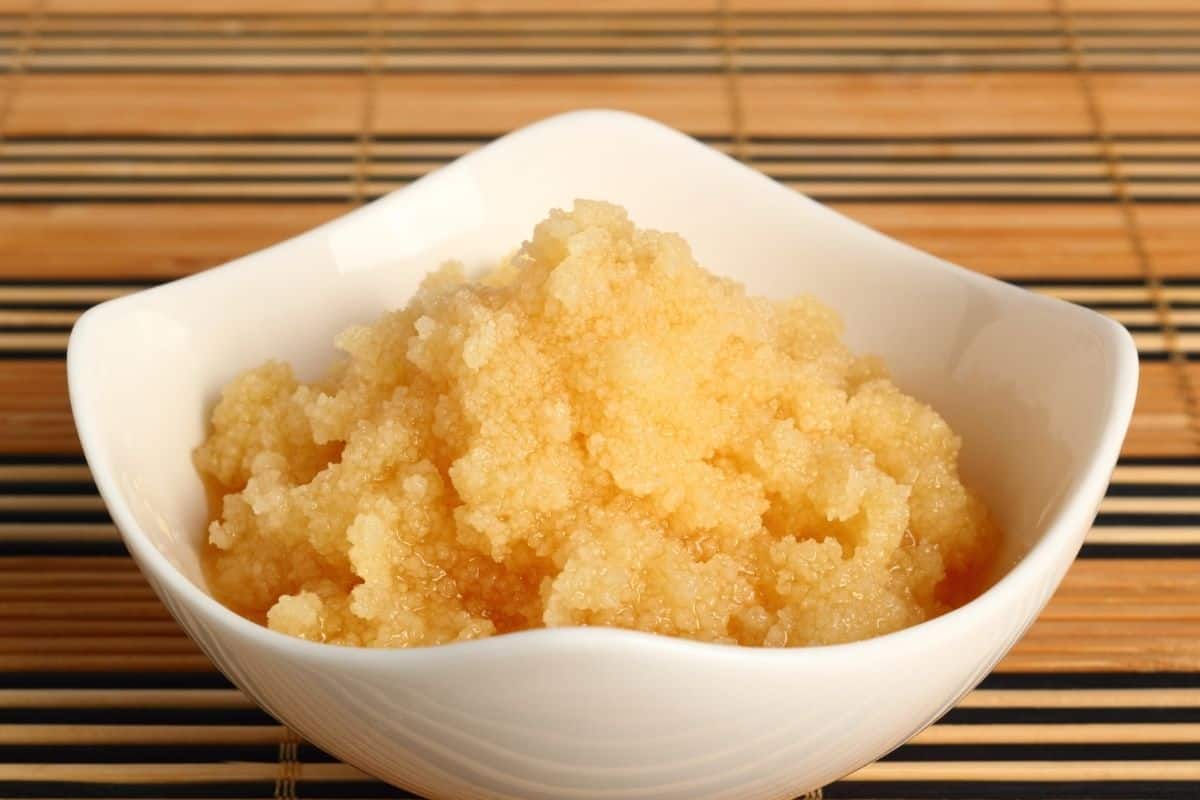
After a few months on the shelf, raw honey is inclined to turn granulated because of the high fructose content and the low moisture level.
Crystallized honey is perfectly safe to eat! It will look a little different (more opaque and grainy), but it’s just as delicious and healthy as before.
Store-bought honey is heated to 160° F (71° C) and rapidly cooled down to prolong its shelf life, and it doesn’t turn into sugar. However, if your raw honey did turn grainy, do not stick it into the microwave, but follow the below steps:
- fill a pot with water, bring it to a boil and turn the fire off
- place a washcloth or small kitchen towel at the bottom of the pot, and set your honey jar on top of it in the hot water; make sure no water gets into the honey
- leave it in the hot water until the water cools, stirring occasionally to move the honey
The above method will work on small skinny jars, but probably harder on large jars where the heat doesn’t penetrate. You can repeat the process to liquify more of the honey, but you can also use the honey as it.
Here are a few ways to use crystallized honey:
- add a teaspoon to your herbal tea
- mix with milk for a delicious drink before bed
- spread on a piece of buttered bread for an easy snack
- add to your morning bowl of oatmeal
- use instead of sugar in baking
So, How Many Times a Year Can You Harvest Honey?
Tending to your apiary is a magical hobby, and raw honey is a gift from your bees that is not only delicious but also beneficial to humans on many levels. If you treat your bee colony well, they will bless you with 2 to 3 honey harvests each season, for years to come. Happy beekeeping!
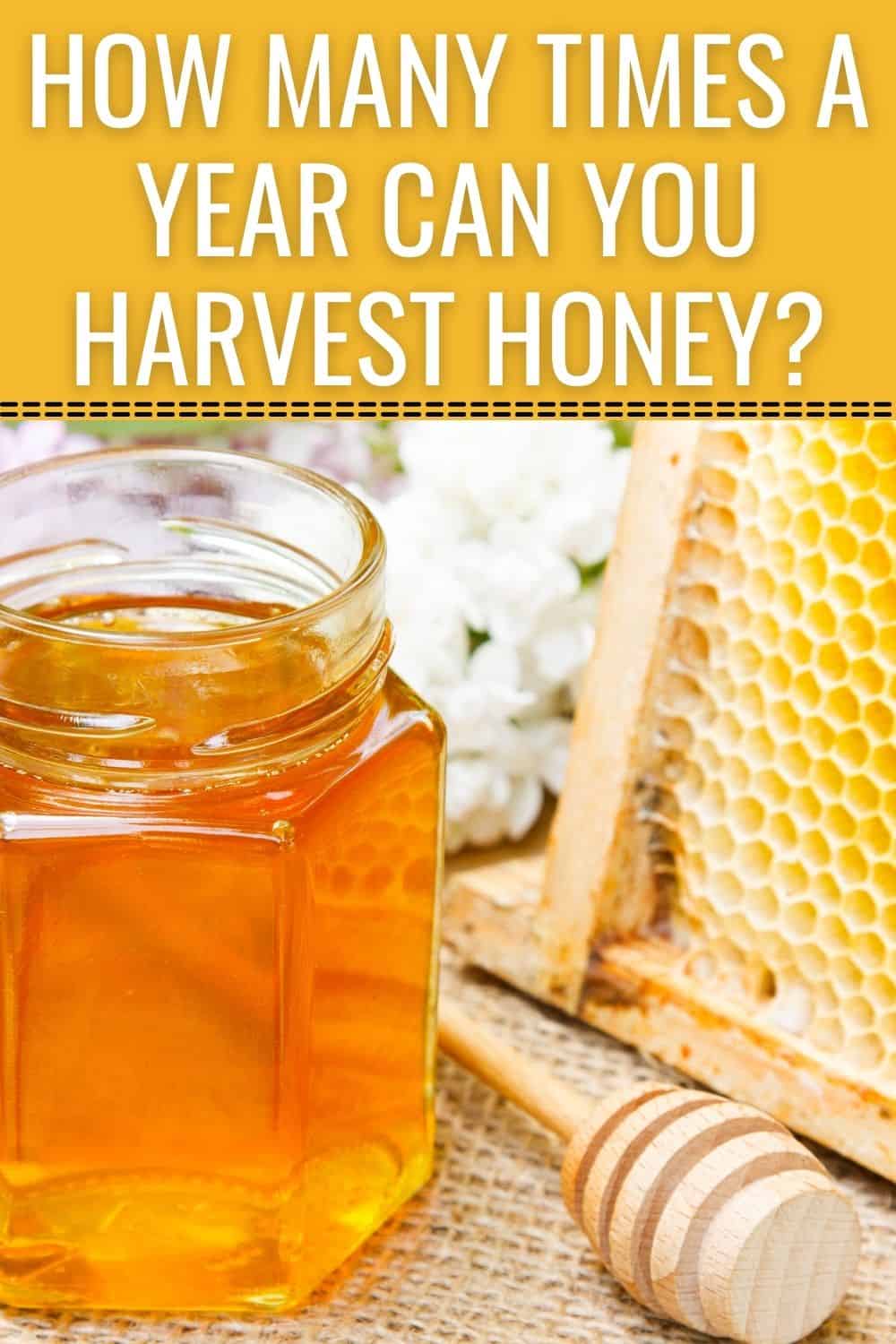



Quick Introduction To Beekeeping
Thursday 10th of November 2022
[…] How Many Times a Year Can You Harvest Honey? […]
ErikuJohn
Thursday 20th of October 2022
I love keeping bees and I would love know more about keeping bees and getting honey for profit. I want to run commercial beekeeping.
Mann Lake Beekeeping Supplies Every Beekeeper Needs
Thursday 11th of November 2021
[…] equipment that man lake manufacturers and distribute for honey extraction is among the best in the world. It really is worthwhile investing in the tools provided by Mann […]